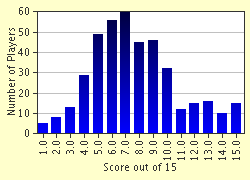Quiz Answer Key and Fun Facts
1. Newton was born on Christmas Day in 1642. Can you tell me where in England that he was born?
2. What was the occupation of Newton's father, also named Isaac, who died before Newton was born?
3. When Isaac Newton was three, his mother, Hannah Newton, married Rev. Barnabas Smith. Which of the following circumstances of the marriage is not correct?
4. Which activity did Newton not enjoy doing as a child?
5. Isaac Newton never received a university education.
6. How old was Newton when he became Lucasian Professor of Mathematics at Cambridge?
7. Which one of Newton's family members died in the late spring of 1679?
8. Newton's great work "Philosphiae Naturalis Principa Mathematica" was published under the Royal Society's license in 1687, but who arranged and paid for its publication?
9. When Newton was forty-seven, he sat for his first portrait. Who painted this now famous portrait of Newton?
10. To what position was Newton appointed in 1696?
11. Under whose reign was Newton honored with a knighthood?
12. How many times was Newton married?
13. How many years was Newton the president of the Royal Society?
14. Which one of the following is not correct about the death of Sir Isaac Newton?
15. Is the house where Sir Isaac Newton was born still standing?
Source: Author
LindaC007
This quiz was reviewed by FunTrivia editor
thejazzkickazz before going online.
Any errors found in FunTrivia content are routinely corrected through our feedback system.

